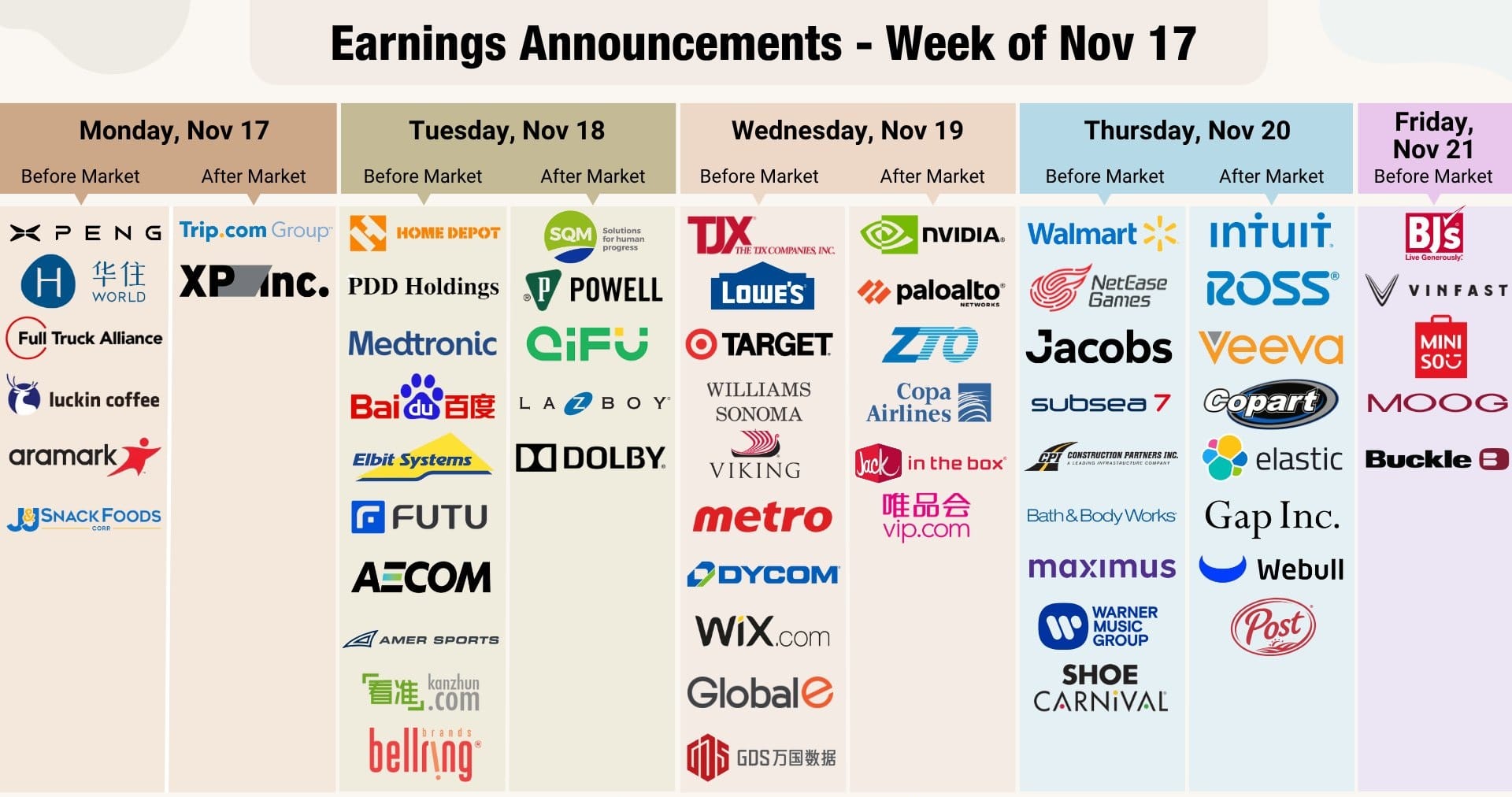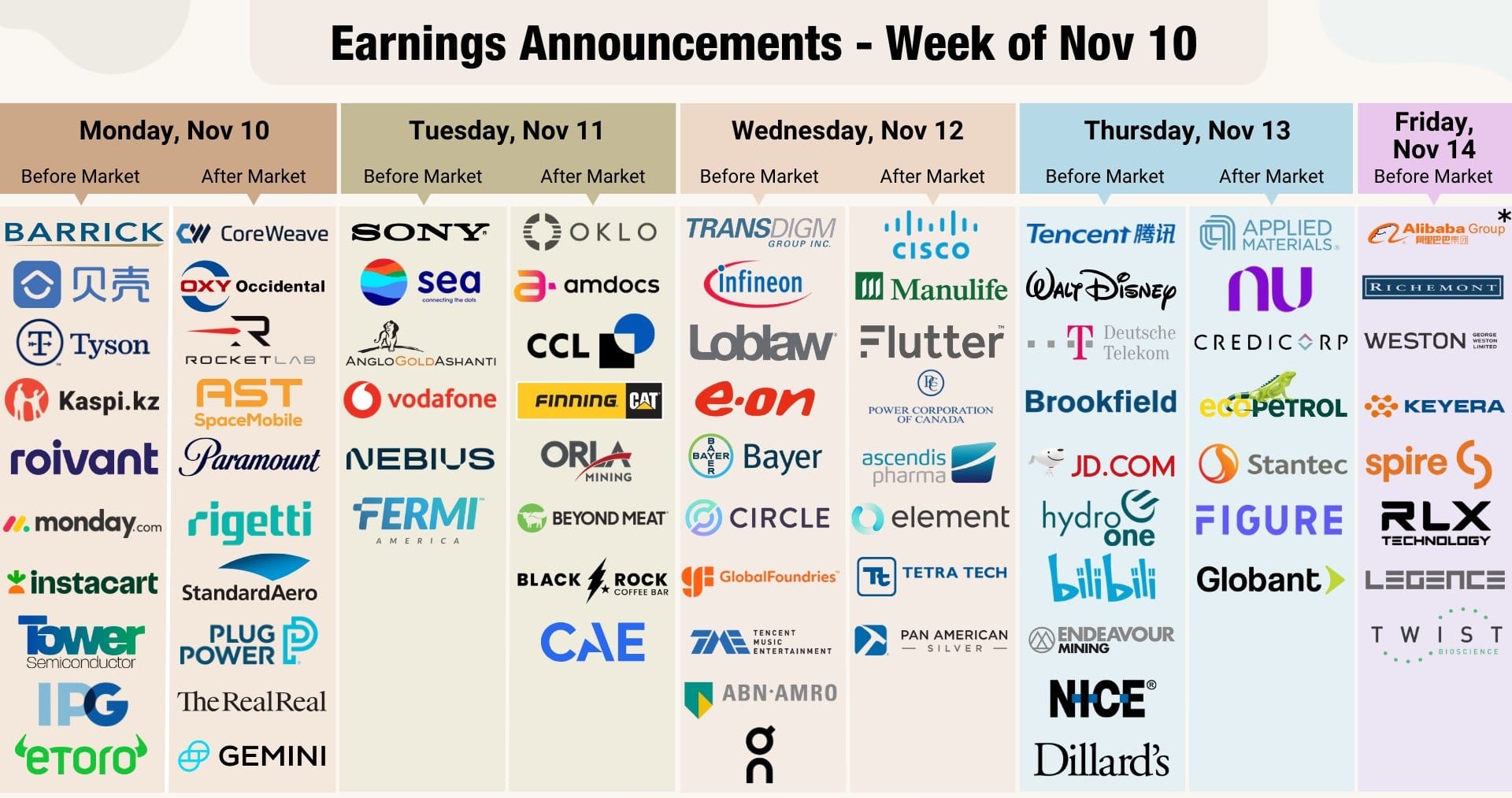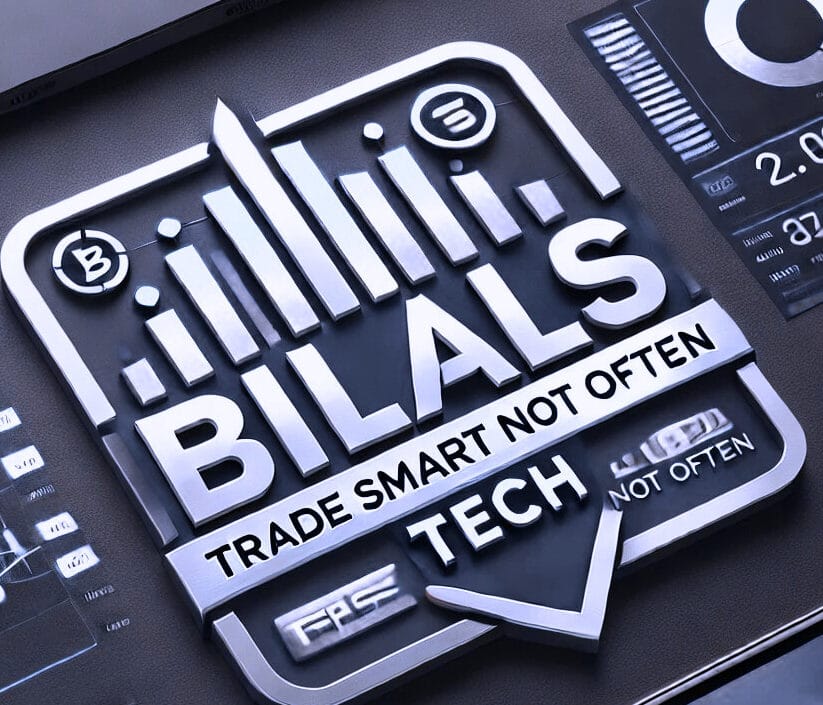North America News
US Markets Close Mixed But End March in the Red
The major US indices wrapped up the day with mixed results, but all finished March with losses.
- Dow Jones gained 417.86 points (+1.00%) to close at 42,001.76.
- S&P 500 rose 30.91 points (+0.55%) to 5,611.85.
- Nasdaq slipped 23.70 points (-0.14%) to 17,295.29.
- Russell 2000 dropped 11.36 points (-0.56%) to 2,011.91.
For the month, all indices fell:
- Dow Jones lost 4.20%.
- S&P 500 dropped 5.75%, marking its worst month since December 2022.
- Nasdaq plunged 8.21%, also its worst monthly performance since December 2022.
Looking at the first quarter of 2025, the losses continue:
- Dow Jones: -1.28%
- S&P 500: -4.59%
- Nasdaq: -10.42%
Dallas Fed Manufacturing Index Drops Sharply in March
Dallas Fed Data – March 2025
The Dallas Fed manufacturing index fell to -16.3 in March, worsening from February’s -8.3 reading. Other key metrics included:
- Output index: 6 (up from -9.1)
- Shipments: 6.1 (slightly up from 5.6)
- New orders: -0.1 (improved from -3.5)
- Employment: -4.6 (declined from -0.7)
- Prices paid for raw materials: 37.7 (higher than 35.0)
- Prices received: 6.3 (down from 7.8)
- Wages and benefits: 16.0 (unchanged from 16.7)
- Growth rate of new orders: -8.1 (weakened from -7.5)
- Hours worked: -2.9 (up from -14.2)
- Capital expenditures: -0.6 (dropped from 8.6)
- Capacity utilization: -2.3 (improved from -8.7)
Overall, the data signals weaker manufacturing conditions, with employment and capital expenditures showing significant declines.

Fed’s Barkin: Its going to take a while before we get clarity on tariff impact
- Fed’s Barkin speaking on CNBC
- It’s going to take a while before we get clarity on tariff impact.
- Suppliers are emboldened, say they will have to pass on higher prices.
- Consumers are frustrated, exhausted, and tired of paying high prices
- Not convinced higher prices will be passed on, or that there won’t be inflation.
- To cut rates requires confidence on inflation.
- Higher the inflation numbers, the less likely you’ll see that.
- 1970s stagflation was characterized by out of whack inflation expectations. Not seeing that now.
- Data right now is okay there is a risk on the employment side..
- This is not a time for me to say how many rate cuts I have penciled in for this year.
- I am nervous about inflation and about employment.
- I’m in no hurry on rate cuts.
- Let’s wait and see how it plays out, as Fed chair says.
- Balance sheet runoff could be slower, for longer.
Fed’s Williams: Its early days in figuring out impact of tariffs
- Fed’s Williams speaking on Yahoo
- it’s early days in figuring out impact of tariffs
- There is still a lot of uncertainty around tariffs, details matter
- Need to watch data to measure impact of tariffs
- Full impact of tariffs can play out over long horizon.
- Tariffs will impact prices
- Consumers goods should see quick pass through from tariffs.
- Intermediate goods could see slow impact from tariffs.
- There is definitely a risk to inflation being higher that Fed forecasts.
- My forecast is that inflation will be relatively stable this year with upside risks.
- Uncertainty is very high right now more concerns about slowing economy.
- Growth and inflation risks are both very important.
- Will not predict odds of recession, economy is currently very solid amid good job market.
- Will not discount weak survey and anecdotal data.
- Uncertainty appears to be impacting behavior.
- Fed will not allow high inflation to take root.
- Fed will achieve inflation goals while being attentive to job mandate.
- Expects economy will continue to grow but slower than last year.
- Economy does not have stagflation right now.
- Expects economy will continue to grow but slower than last year.
- Monetary policy has been really well-positioned.
- The current level Fed policy is well-positioned.
- Fed has the ability to collect more information before changing policy.
- Fed needs to follow what it learned from data..
- Does not know exactly where monetary policy needs to be over remainder of years..
- Fed needs to keep longer run inflation expectations anchored.
- Longer run inflation expectations have been anchored.
- Fed balance sheet drawdown slowdown was natural next step
Goldman Sachs says 35% chance of recession (from 20%) in 12 months
- Goldman Sachs forecast year end PCE inflation at 3.5%
Goldman Sachs has revised its U.S. tariff expectations sharply higher for 2025, warning that escalating trade tensions could weigh significantly on growth, inflation, and employment. In a note to clients, the bank said it now expects the average U.S. tariff rate to rise by 15 percentage points next year—up from a previous baseline of 10 percentage points and in line with its earlier risk scenario.
The upward revision is largely driven by the expectation that Trump will announce a sweeping “reciprocal tariff” regime averaging 15% across all U.S. trading partners on April 2. While exemptions for specific products and countries are likely, Goldman estimates the effective impact on average tariffs would still amount to a 9-point increase.
In response, the firm has raised its year-end 2025 core PCE inflation forecast by 0.5 percentage points to 3.5%, citing the inflationary impact of higher import costs. GDP growth is now projected to slow to just 1.0% on a Q4/Q4 basis, down 0.5 percentage points from prior estimates, while the unemployment rate is expected to climb to 4.5% by year-end. Reflecting the deteriorating outlook, Goldman has also increased its 12-month recession probability to 35%, citing weaker consumer and business sentiment and signs that policymakers may be more willing to accept near-term economic pain in pursuit of broader policy goals.
With real income growth already decelerating—projected to average just 1.4% in 2025—Goldman cautions that the economy may be entering a more fragile phase, where sentiment and policy risks exert greater drag than in recent years.
Commodities News
Gold Hits Record High Above $3,100 Amid Trade Uncertainty
Gold surged to an all-time high on Monday, surpassing $3,127 before pulling back slightly. At the time of writing, the metal trades at $3,119, up more than 1% as investors flock to its safe-haven appeal.
The rally is driven by concerns over US trade policies and the potential for new tariffs on April 2, with speculation that President Trump could impose universal tariffs rather than the 10-15% previously suggested by US Treasury Secretary Scott Bessent. Trump’s cryptic response—”You’d start with all countries. So let’s see what happens”—has fueled market uncertainty.
Recession Fears Grow as Goldman Sachs Raises Odds to 35%
Goldman Sachs now sees a 35% chance of a US recession, up from 20%, as consumer and business sentiment weakens. Washington’s apparent tolerance for an economic slowdown has also increased concerns.
Despite a 0.24% rise in the US Dollar Index (DXY) and higher Treasury yields, gold prices continue to climb. The 10-year Treasury yield has partially recovered, but safe-haven demand remains strong, keeping bullion in focus.
Key Economic Data in Focus
- Chicago PMI rose to 47.6 in March, beating expectations of 45.2, but remains in contraction for the 16th straight month.
- Investors are now watching the upcoming ISM Manufacturing & Services PMI and Nonfarm Payrolls data for further economic signals.
Wall Street Banks Set Higher Gold Targets
Major banks have raised their gold price forecasts:
- Goldman Sachs, Société Générale, and Bank of America now see $3,300 as the next key level, according to Kitco.
Meanwhile, geopolitical risks remain in play, with Trump threatening 25-50% secondary tariffs on buyers of Russian oil if Moscow refuses to cooperate on ending the Ukraine war.
Oil Prices Rebound, Settling Above Key Moving Averages
Crude oil prices bounced back, settling at $71.48 per barrel, a gain of $2.12 (+3.05%). The price hit a high of $71.83 and a low of $68.81 during the session.
Notably, oil broke above its 100-day moving average ($70.66) and the 38.2% retracement level ($71.16) from its January 2025 high to its March 2025 low. The next major resistance stands at the 200-day moving average ($72.73), which hasn’t been breached since early February.

Silver Holds Strong Above $34 Despite Market Uncertainty
Silver prices remain elevated, trading at $34.02 after reaching a daily high of $34.46. Despite a minor dip, silver has gained 5% over the past four sessions.
Technical levels to watch:
- Bullish Scenario: A close above $34.00 could pave the way for a push toward the year-to-date high of $34.58, with additional resistance at $35.40 (October 2012 peak).
- Bearish Scenario: A drop below $34.00 could trigger a correction to $33.51, with the next support at $33.00.
Traders remain cautious ahead of US Liberation Day on April 2, when Trump is expected to announce 20% universal tariffs, which could impact commodities.
European Natural Gas Prices Continue to Slide
European natural gas prices extended their declines for a second session, dropping 4.7% week-over-week. ING analysts attribute the weakness to the end of the heating season, increasing LNG imports, and below-average storage levels.
As of March 29, European gas storage stood at 33.7% full, well below the five-year average of 45% and last year’s 58.7% at this time.
Oil Prices Slip as US Drilling Slows
Oil prices opened lower on Monday, with Brent crude hovering around $73.50 per barrel. This comes after Trump suggested secondary tariffs on Russian oil, should a ceasefire with Ukraine fail.
Drilling activity in the US has slowed:
- US oil rigs fell by two last week, bringing the total to 484, the lowest since mid-February.
- Total rig count (oil + gas) dropped to 592, down 4.7% year-over-year.
- Frac spread count, an indicator of completion activity, declined by six to 209.
Copper Retreats as Tariff Concerns Weigh on Markets
Copper prices continue to pull back from their nine-month high, weighed down by global risk-off sentiment. The upcoming US tariff announcement on April 3 is particularly bearish for industrial metals.
Higher tariffs could slow global economic growth and keep inflation elevated, both of which negatively impact demand for copper and other raw materials.
Weekend: Trump revoked permits and waivers allowing Western firms to operate in Venezuela
- Pressuring Maduro
Trump rescinded permits and waivers that had allowed several Western energy firms to operate in Venezuela, further tightening pressure on President Nicolás Maduro’s regime.
- Affected companies include U.S.-based Global Oil Terminals—led by energy magnate Harry Sargeant III (a staunch Trump supporter) —as well as Spain’s Repsol and France’s Maurel et Prom, all of which must cease operations in the country by May 27.
- The decision also impacts Venezuelan gas firms working with PDVSA, the state oil company. Global Oil Terminals must halt financial dealings with PDVSA by April 2 and settle outstanding payments.
Trump said he is annoyed with Putin, threatens ‘secondary tariffs’ on Russian oil
- Trump spoke with US media on Sunday
Trump said he’s “very angry’ with Russian President Vladimir Putin and would consider imposing additional tariffs on Russian oil if a ceasefire with Ukraine isn’t achieved, according to NBC News.
NBC said they spoke with Trump in a phone interview.
- Trump is “very angry” about Putin’s suggestion to replace Ukraine’s leadership and sideline President Zelenskiy.
- He believes that new leadership in Ukraine would delay any potential peace deal.
- Trump said he’s “pissed off” and would impose secondary sanctions on all Russian oil if Russia is at fault for a failed peace deal.
- He plans to speak with Putin this week.
Europe News
European Markets Tumble Amid Global Uncertainty
European stock markets ended sharply lower, struggling to gain momentum as investor sentiment weakened:
- Germany’s DAX: -1.33%
- France’s CAC 40: -1.58%
- UK’s FTSE 100: -0.88%
- Spain’s Ibex: -1.31%
- Italy’s FTSE MIB: -1.77%

Germany’s March CPI Matches Expectations
Latest Data from Destatis – March 31, 2025
Germany’s preliminary inflation data for March showed a 2.2% annual increase, in line with forecasts. The monthly CPI rose by 0.3%, slightly below the expected 0.4%. The harmonized index of consumer prices (HICP) increased by 2.3% year-on-year, down from the prior 2.6%, while the monthly HICP figure came in at 0.4%, missing the expected 0.5%.
Bavaria’s Inflation Eases Slightly in March
Latest Data from Destatis – March 31, 2025
Bavaria’s consumer price index (CPI) recorded a 2.3% annual increase in March, down from 2.4% in February. Other German states also released their figures:
- Hesse: 2.4% (up from 2.3%)
- Brandenburg: 2.3% (unchanged)
- Saxony: 2.5% (up from 2.3%)
- North Rhine-Westphalia: 1.9% (unchanged)
- Baden-Württemberg: 2.2% (down from 2.5%)
These numbers suggest the national inflation figure is likely to range between 2.3% and 2.4%, surpassing the forecasted 2.2%. However, core inflation remains the key focus.
Germany’s February Import Prices Edge Up More Than Expected
Latest Data from Destatis – March 31, 2025
Germany’s import prices increased by 0.3% in February, surpassing the expected flat reading. This follows a 1.1% rise in January. On an annual basis, import prices climbed 3.6%, marking the highest year-on-year gain since January 2023. Consumer goods saw a 0.3% price increase, while intermediate goods rose 0.5%. Prices for capital goods remained stable. Excluding energy, import prices also rose 0.3% compared to the previous month.
German Retail Sales Show Strong February Growth
Latest Data from Destatis – March 31, 2025
Retail sales in Germany grew by 0.8% in February, exceeding expectations of no change. January’s figure was revised up to 0.7% from the initially reported 0.2%. This strong performance suggests a positive start for consumer spending in 2025 after a sluggish holiday season. Food store sales increased by 0.8%, while non-food retail sales posted a 0.6% gain, signaling healthier consumer activity.
Italy’s Inflation Accelerates in February
Latest Data from Istat – March 31, 2025
Italy’s preliminary CPI data showed a 2.0% year-on-year rise in February, beating expectations of 1.6%. The harmonized index of consumer prices (HICP) came in at 2.1%, higher than the forecasted 1.8%. While headline inflation surged, core inflation held steady at 1.7%, providing some reassurance for the European Central Bank.
UK Mortgage Approvals Slightly Below Forecasts in February
Latest Data from BOE – March 31, 2025
The UK recorded 65.5k mortgage approvals in February, marginally below the expected 65.6k. This is a slight decline from January’s 66.2k. Net consumer credit increased by £1.4 billion, surpassing the £1.2 billion estimate but lower than January’s £1.7 billion. Mortgage debt net borrowing fell by £0.9 billion to £3.3 billion, following a £0.8 billion rise in January. Annual mortgage lending growth remained steady at 1.9%, while consumer credit growth held firm at 6.4%.
UK business confidence held steady in March, matching February’s six-month high
- Lloyds Bank Business Barometer stayed at 49% in March
UK business confidence held steady in March, matching February’s six-month high, according to Lloyds Bank.
- Lloyds Business Barometer March 2025 came in at 49 vs. expected 50 and February’s 49
Retailers showed strong sentiment, aligning with official data showing a surprise jump in February retail sales.
- Confidence in own trading prospects hit its highest level since 2017, despite broader economic uncertainties.
- Manufacturing sentiment fell sharply, reflecting concerns echoed in the recent S&P Global PMI data.
- Upcoming U.S. tariffs, domestic tax hikes, and energy bill increases may challenge the UK’s early 2025 recovery.
- Hiring, pay, and price expectations eased, suggesting a cautious outlook despite signs of underlying growth.
Swiss Sight Deposits Increase Slightly in Late March
Latest Data from SNB – March 31, 2025
Total sight deposits in Switzerland rose to CHF 451.2 billion for the week ending March 28, up from CHF 449.2 billion previously. Domestic deposits also increased, reaching CHF 441.7 billion from CHF 440.4 billion. While this suggests a minor uptick, the overall trend has remained relatively steady in recent months.
The trend as per below:

Tesla China Introduces Interest-Free Loans Amid Sales Slump
Market Update – March 31, 2025
Tesla China is rolling out a three-year, interest-free loan for the refreshed Model Y. Additionally, five-year interest-free loans are available for the Model 3 Rear-Wheel Drive Long-Range variant until April 30. This move comes as Tesla faces a sharp sales decline in China, where BYD remains the top-selling EV brand. Tesla’s sales have dropped 49% in the country.
Tesla shares have fallen by $16.27 (-6.14%), currently trading at $247.56. The stock had previously tested the 200-day moving average at $287.04 before closing at $273.13 last Friday. Today’s decline has filled the price gap from March 21 to March 24, with a low of $243.36 recorded.
ECB president Lagarde: We’re almost at our inflation target
- Remarks by ECB president, Christine Lagarde
- Keeping inflation in check is a constant battle
- Inflation needs to come down in a durable manner
- To do this, we need to have an interest rate that is carefully set
- Trump tariffs a chance for Europe to show independence
- Any ensuing trade war would be a lose-lose scenario
ECB’s Panetta: The fight against inflation cannot be considered over
- Remarks by ECB executive board member, Fabio Panetta
- Must carefully monitor all factors that could hinder return to 2% target
- Weak euro area economy and geopolitical tensions contributing to containing inflation
- But increased uncertainty, especially contradictory US policy announcements, calls for caution on rates
Goldman Sachs now also sees the ECB delivering another rate cut in July
- The firm previously penciled in rate cuts for April and June
They’re now expecting another 25 bps rate cut before the summer break kicks in, following the latest developments.
Asia-Pacific & World News
China: Manufacturing Grows at Fastest Pace in a Year
- Manufacturing PMI:50.5 (Expected: 50.5, Prior: 50.4)
- Production Index: 50.5, up from 50.0 in February.
- New Orders Index: 51.8, an improvement from 51.1.
- New Export Orders: 49.0, remaining in contraction for the 11th consecutive month, reflecting weak external demand.
- Non-Manufacturing PMI: 50.8 (Expected: 50.5, Prior: 50.4)
- Composite PMI: 51.4, improving from 51.1.
Takeaway: Solid results—nothing spectacular, but these numbers suggest China’s economic momentum is holding up, even as export weakness lingers.
People’s Bank of China punishes two who spread false info about interest-rate cuts
- The two spread false info over the internet
Bloomberg (gated) carried the article. In brief:
- The People’s Bank of China investigated two individuals for allegedly spreading false rumors about interest rate cuts to gain online attention while posing as financial media.
- The operation was conducted in coordination with the network security department, and the suspects were handled by local law enforcement.
- In 2024, Chinese authorities investigated over 42,000 misinformation cases online, punishing more than 47,000 individuals under the nationwide “Clean Net” campaign.
PBOC sets USD/ CNY reference rate for today at 7.1782 (vs. estimate at 7.2593)
- PBOC CNY reference rate setting for the trading session ahead.
PBOC injected 166.7bln yuan via 7-day reverse repos at 1.50%
- 135bn yuan mature today
- net injection is 31.7bn yuan
China injects $69 billion into state banks to bolster economy
- Sunday news from China
China’s finance ministry will inject 500 billion yuan (around $69 billion) into four of the country’s largest state-owned banks as part of a broader effort to strengthen the financial sector and support economic growth.
The Bank of China, China Construction Bank, Bank of Communications, and Postal Savings Bank plan to raise a combined 520 billion yuan ($72 billion) through private share placements, with the finance ministry as the top investor in each offering.
The fundraising aims to replenish the banks’ core tier-1 capital, with new shares issued at a premium of up to 21.5% above recent trading levels. This move follows Beijing’s earlier pledge to use special sovereign bonds to boost lenders’ capital buffers and enable them to better support sectors such as property, technology, and consumption. While China’s largest lenders already exceed regulatory capital requirements, they face growing challenges including shrinking margins, slowing profits, and rising bad debt. Strengthening their capital positions is seen as key to maintaining financial stability and achieving the government’s 5% growth target for 2025.
China says that it has discovered a major oilfield in the eastern South China Sea
- China National Offshore Oil Corporation (CNOOC)
China National Offshore Oil Corporation (CNOOC) announced on Monday that it has discovered a major oilfield in the eastern South China Sea
- proven reserves exceeding 100 million tonnes
- newly discovered Huizhou 19-6 oilfield
- China’s first large-scale integrated clastic oilfield discovered in deep to ultra-deep layers, said the CNOOC.
China – Nanjing has lifted home purchase limits starting March 31
- Positive news, at the margin, for the embattled property sector
Nanjing is China’s 2nd-tier Eastern city
- has lifted home purchase limits starting March 31
Nomura: Beijing’s cautious tariff response is pragmatic amid limited import alternatives
- Nomura says aggressive retaliation risks harming China’s own economy given its reliance on certain US goods
With U.S.–China trade tensions expected to escalate following the Trump administration’s latest “America First” policy review, China’s measured response to new U.S. tariffs appears to be a calculated move, according to Nomura.
In a report led by Chief China Economist Lu Ting, Nomura analysed China’s capacity to replace U.S. imports with goods from other countries. While there are some substitution options for items like LNG, engine parts, and scrap copper, the range is narrow. For key imports such as soybeans, semiconductors, crude oil, and aircraft, viable alternatives are either limited or would take years to scale.
Against this backdrop, Nomura says Beijing’s restrained reaction to a recent 20% U.S. tariff makes strategic sense. Any aggressive retaliation risks harming China’s own economy given its reliance on certain U.S. goods.
With few easy trade-offs available, Nomura concludes that a cautious approach helps China preserve economic stability while managing growing geopolitical and trade pressures.

Australia: RBA to Hold Rates, Shift to Dovish Tone
- The Reserve Bank of Australia (RBA) meets on March 31 – April 1, with the cash rate expected to stay at 4.10%.
- Commonwealth Bank of Australia (CBA) expects the RBA to turn more dovish as it waits for Q1 inflation data.
🔹 Key factors in the RBA’s stance:
Recent data has been softer than RBA projections, but not weak enough to justify an immediate cut.
Policymakers have maintained a modestly hawkish tone since the February rate cut, making back-to-back cuts unlikely.
A softer Q1 inflation print could seal a 25bps cut in May.
Takeaway: No rate cut yet, but if inflation continues easing, May could see a shift in policy.
Australia: Private Sector Credit & Inflation Gauge
- Private Sector Credit (Feb):+0.5% m/m (Expected: +0.5%, Prior: +0.5%)
- Steady growth in credit, indicating stable business and household borrowing.
- Melbourne Institute Inflation Gauge (March):
- +0.7% m/m, highest since December 2023 (Prior: -0.2%).
- +2.8% y/y (Prior: 2.2%).
- Trimmed mean: +0.2% m/m, +2.9% y/y.
Takeaway: A notable jump in inflation, which could complicate RBA rate-cut expectations if this trend continues.
Business and housing credit leading

Reserve Bank of Australia should cut now – “Global Economic Outlook Goes Into a Tailspin”
- Wall Street Journal report
Reserve Bank of Australia should cut rates tomorrow, Tuesday, April 1, 2025, says this piece in the Wall Street Journal:
In really brief:
- things have changed significantly, and the RBA needs to throw off its ultra cautious stance and deliver a cut Tuesday
- With the world’s major economies speeding toward “liberation day” and what will likely be the biggest trade war in generations, bets on a U.S. recession are rising, and the world growth outlook is in a tailspin.
New Zealand: Business Confidence Slips, Costs Rising
- ANZ Business Confidence (March): 57.5 (Prior: 58.4)
- Activity Outlook: 48.6 (Prior: 45.1)
🔹 Key Observations:
Pricing & cost expectations surged to the highest level in over a year.
One-year inflation expectations rose to 2.6% (+0.1% from prior month).
Takeaway: While confidence remains high, rising costs could slow business expansion and pressure inflation.

Japan: Industrial Output Rebounds, Retail Sales Miss Expectations
- Industrial Output (Feb, Preliminary):+2.5% m/m (Expected: +2.3%, Prior: -1.1%)
- Y/Y: +0.3% (Prior: +2.2%).
- 1-month ahead forecast: +0.6% (Prior: +0.5%).
- 2-month ahead forecast: +0.1% (Prior: -2.0%).
- Solid recovery in output, with positive forecasts ahead.
- Retail Sales (Feb):+1.4% y/y (Expected: +2.0%, Prior: +4.4%)
- M/M: +0.5% (Expected: -0.2%, Prior: +0.5%).
- A slowdown in yearly growth, but monthly sales still show resilience.
Takeaway: Japan’s industrial sector is recovering, but consumer spending is softening, adding pressure on policymakers.
“Trump’s tariff regime will be more disruptive to global economy than markets are pricing”
- CBA on flows in JPY
Commonwealth Bank of Australia analysts on USD/JPY:
- “We judge that Trump’s tariff regime will be more disruptive to the global economy than markets are currently pricing”
- Risks are tilted to a sharp decline in global equities and a weaker USD/JPY
- USD/JPY could soon sustainably break below support at 148.13
Japan’s Finance Minister Kato says excessive moves on forex are undesirable
Japan’s Finance Minister Kato:
- will communicate closely with US counterparts on FX
- have agreed with US that excessive moves on forex are undesirable
Crypto Market Pulse
Crypto Market Update: Bitcoin Holds $82K as Altcoins Struggle
Bitcoin Steady at $82,000 Amid Tariff Concerns
Bitcoin remains firm at $82,000, as investors turn to crypto to hedge against the potential fallout from Trump’s trade policies. Despite a 3% dip in total crypto market capitalization to $2.75 trillion, BTC continues to attract buyers.
However, regulatory scrutiny has added pressure to the market, with US lawmakers questioning Trump’s SEC chair nominee, Paul Atkins, over potential conflicts of interest.
XRP, SOL, and ADA Extend Losses
- XRP: Down 3.6% to $2.08, extending weekly losses to 15.8%.
- Solana (SOL): Dropped 0.6% to $124.11, down 12.4% for the week.
- Cardano (ADA): Fell 4.5% to $0.6438 as sellers dominated.
Toncoin (TON) Gains But Faces Resistance
Toncoin surged 3.1%, buoyed by a $400 million investment from Sequoia Capital, Ribbit Capital, and Draper Associates. However, profit-taking near $4 has capped further upside.
FTX to Start Creditor Repayments on May 30
FTX will begin repaying major creditors on May 30, distributing funds from its $11.4 billion reserve. Creditors may receive up to 118% per claim, but payouts are based on crypto prices from November 2022, ignoring major price increases since then.
With Solana up 650% since FTX’s collapse, many creditors are frustrated over the valuation process, even though they will receive 9% annual interest on delayed payments.
Trump’s Sons Launch Bitcoin Mining Venture with Hut 8
Eric and Donald Trump Jr. have partnered with Hut 8 to launch “American Bitcoin”, a new mining operation aiming to be the most efficient in the world.
- Hut 8 will control 80% of the venture, while American Data Centers retains 20%.
- The firm targets a 50 EH/s hash rate, positioning itself as a publicly traded industry leader.
- The project will integrate AI infrastructure alongside Bitcoin mining.
Eric Trump emphasized their commitment to Bitcoin and decentralized finance, stating that the partnership will drive significant future growth in the sector.

Bitcoin Faces Resistance But May Repeat 2017 Breakout Pattern
Bitcoin stabilized around $83,400 on Monday, down 2% from March’s opening price of $84,430. Despite losing 18% in February and dipping another 2% in March, analysts remain optimistic about a potential breakout in April.
Nic Puckrin, CEO of Coin Bureau, highlighted similarities to 2017 when Bitcoin consolidated for months before skyrocketing 360%. While a similar surge isn’t expected, he predicts BTC could break past its previous all-time high of $109,354 and reach $150,000 during this cycle.
However, Bitcoin must first overcome a critical $93,000 resistance level. A failure to do so could result in a “Double Top” pattern, leading to a pullback.
Crypto Market Sentiment Shifts Amid Volatility
The Crypto Fear & Greed Index recently recovered from “Extreme Fear,” largely driven by concerns over US President Donald Trump’s proposed tariffs on risk assets. The Libra meme coin scandal, which wiped out $251 million, further rattled investor confidence.
Despite this, on-chain metrics remain bullish:
- Bitcoin is trading above its 200-day moving average, historically a positive signal.
- The Coinbase Premium Index shows US investors are paying a premium for BTC, signaling strong domestic demand.
Japan planning to officially recognize crypto assets as financial products – Nikkei report
- Nikkei says legislation will be introduced in 2026
Japan’s Financial Services Agency (FSA) is planning to amend the Financial Instruments and Exchange Act to officially recognize crypto assets as financial products, according to the Nikkei business daily.
As part of this change, crypto assets would be subject to insider trading rules, banning trades based on non-public information. The FSA is expected to present the bill to parliament as early as 2026.

The Day’s Takeaway
Day’s Takeaway: Key Market Trends & Developments
US Markets: Gold Surges, Recession Risks Rise
- Gold hits a record $3,127 before pulling back to $3,119, fueled by trade tensions and risk aversion.
- Recession fears grow, with Goldman Sachs raising US recession odds to 35%, citing weaker sentiment and Washington’s tolerance for an economic slowdown.
- US Treasury yields recover slightly, but gold remains resilient as investors seek safe-haven assets.
- Chicago PMI beats expectations (47.6 vs. 45.2 forecast) but remains in contraction for the 16th consecutive month.
Commodities: Gold & Oil in Focus
- Gold outlook bullish, with Goldman Sachs, Société Générale, and Bank of America setting a $3,300 target.
- Oil markets watch geopolitical risks, as Trump threatens secondary tariffs of 25-50% on Russian oil buyers.
Europe: Economic Uncertainty Continues
- European markets remain cautious amid US trade policy uncertainty and rising global recession risks.
- Investors weigh the impact of potential US tariffs on European goods if Trump follows through on his April 2 tariff expansion.
Asia: Market Reactions & Trade Impact
- China and Japan monitor US tariff decisions, as increased levies could impact export-dependent economies.
- Asian markets show mixed reactions, with gold demand surging but equities facing pressure.
Rest of the World: Global Markets Adjust to Uncertainty
- Emerging markets brace for capital outflows, with rising US bond yields making safe-haven assets more attractive.
- Geopolitical risks escalate, with US-China tensions and the ongoing war in Ukraine remaining key concerns.
Crypto: Bitcoin Holds $82K, Altcoins Struggle
- Bitcoin steady at $82,000, as investors hedge against macro risks from Trump’s trade policies.
- XRP (-3.6%), SOL (-0.6%), and ADA (-4.5%) struggle as regulatory scrutiny increases, with Paul Atkins facing Congress over SEC conflicts of interest.
- Toncoin (TON) gains 3.1% on a $400M investment but faces resistance near $4.
- FTX to begin creditor repayments on May 30, but payouts based on 2022 crypto prices spark frustration.
- Trump’s sons launch “American Bitcoin” mining venture with Hut 8, targeting 50 EH/s hash rate and AI integration.
Markets remain on edge, with US trade policy, recession risks, and regulatory pressures shaping the economic landscape. Safe-haven assets like gold and Bitcoin continue to attract interest, while equities and commodities react to shifting global dynamics.

















